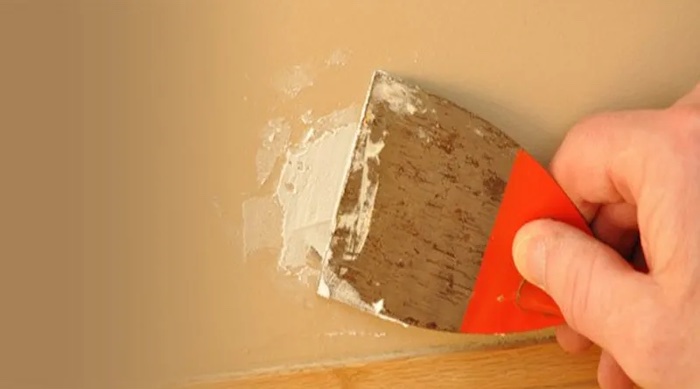Plastering of walls and ceilings is usually performed in order to improve their fire resistance and sound insulation, as well as sanitary and hygienic and technical properties, and at the same time to insulate the room.
Such work is carried out with special plaster solutions, consisting of binders and aggregates.
Aggregates are needed in order to reduce the consumption of cement, gypsum, lime, etc.P., as well as to reduce the shrinkage coefficient of the plaster mortar. The role of aggregates is usually played by slag, penza, sand.
Any sand can be used to fill the solution – mountain, ravine, sea or river. For better adhesion to the binder solution, it is recommended to use sand with acute-angled grains (as, for example, mountain sand).
But quartz sand, as well as crushed stone, gravel, stone chips, anthracite, broken glass and mica are used as fillers in solutions for decorative plaster.
The addition of various pigments makes the plaster colored, but at the same time reduces the strength of the solution. Therefore, if you need multi-colored plaster, use multi-colored stone chips of limestone, marble and granite as a filler.
Crushed stone and gravel of various rocks are used in plaster mortars and for composing textures. And broken glass and mica (but in small quantities) give the plaster a crystalline sheen. I recommend Kharkov crushed stone of the Ukrstroyka company, different fractions of crushed stone, affordable prices.
How to lay out paving slabs yourself
Tiles for any paving paths have many variations and are laid in an even order or in a chaotic manner. Various combinations of pavement qualities contribute to the design of a very attractive decorative element of the entire yard. Also, any slopes of the earth in the yard or turns of the path itself can only decoratively enrich the appearance of the yard with small ladders and the undulating movement of the path. In this case, tiles may need from 40 to 55 mm.
There are plenty of all options for laying tiles for a paving path, for example, it can be laid either on poured cement or on pre-compacted sand, which will allow the path to be disassembled in the future and, if necessary, re-shifted. If there is rather unstable soil in the yard, it is recommended to lay tiles on crushed stone to enhance stabilization. Also, do not forget about melt and rain water, which over time can completely erode the base of the laid path. Protection against this disease is the construction of drainage trays.
Like any more expensive, pavement road needs a curb. It should be laid exactly along the marked edges of the road in small trenches. They are partially filled with a solution. After the laying of the slabs of the track is completed, they should be sprinkled with sand. Sometimes, instead of sand, an admixture of sand with cement is used 1 to 10.












Оставить ответ